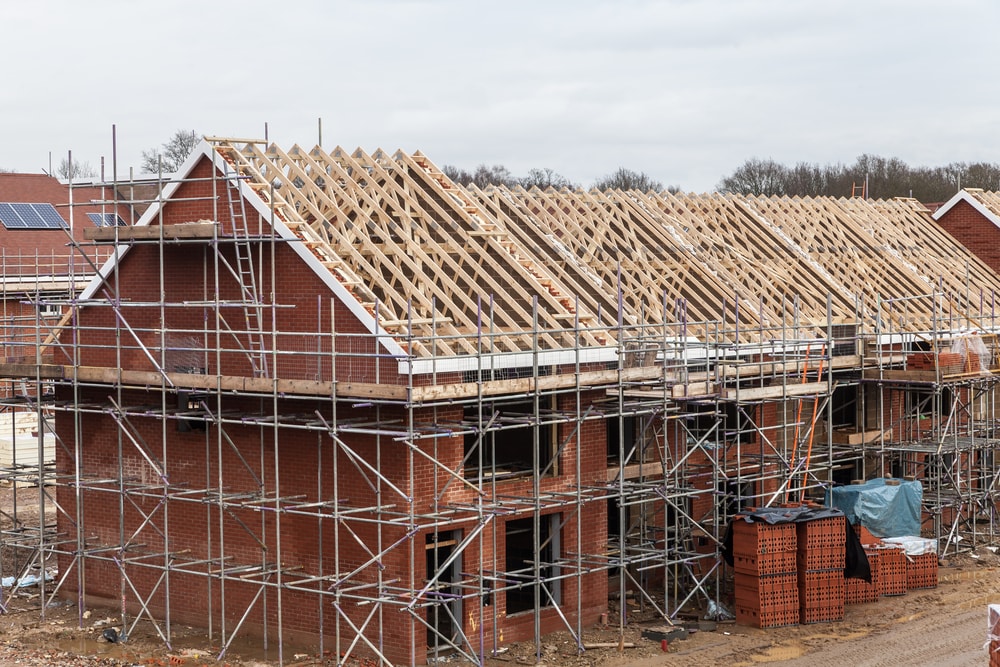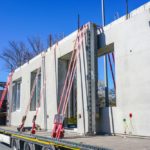News - Construction News
Housebuilding pledge under threat

Despite a government rallying cry about addressing the housing crisis pushing for the creation of new home across the UK, housebuilding statistics are registering a fall in production.
The latest statistics from March Quarter 2018, show that new build dwelling starts in England have dropped five per cent compared to the previous quarter, and eight per cent decrease compared with the same quarter the previous year.
The Prime Minister has made much of her manifesto pledge to create homes for the people who need them. The Conservative party renewed its 2015 commitment to build one million new homes by the end of 2020 during campaigning ahead of the 2017 general election last June; yet it appears actions towards solving the housing crisis are having little effect. If the rate of construction is not reversed, the gap between the number of homes delivered and the homes needed and pledged will widen to nearly 100,000.
The battle to help solve the housing crisis is not helped by the merry go round of ministers in the Department for Housing, with Kit Malthouse recently becoming the 17th Housing Minister in 20 years, and the third in the last two years.
The Ministry of Housing, Communities & Local Government, released figures at the end of June which show new homes starts have also fallen year on year. Annual new build dwelling starts totalled 157,480 in the year to March 2018, down by three per cent compared with the year to March 2017. During the same period, completions totalled 160,470, an increase of eight per cent compared with the previous year.
Private enterprise new build dwelling starts (seasonally adjusted) in the quarter to March 2018 were also down by three per cent from the previous quarter, and completions were also down by nine per cent. Starts by housing associations were 14% lower compared to the last quarter and completions ten per cent lower.
All starts are now 109% per cent above the trough in the March quarter 2009, but 14% below the March quarter 2007 peak. All completions are 50% above the trough in the March quarter 2013, and nine per cent below the March quarter 2007 peak. The rate of new building has been growing steadily since 2013 – and that trend is continuing through 2017 and 2018.
The anticipated failure of Conservative housing policy in England hasn’t stopped the Government making even bolder promises. In last November’s Autumn Budget, Mr Hammond pledged that 300,000 new homes would be built every year by the mid-2020s.
The evidence of insufficient housebuilding was further compounded in May, when the National Housing Federation – which represents housing associations in England, social landlords to five million people – and Crisis, the national charity for homeless people, released research conducted by Heriot-Watt University showing that England’s total housing need backlog has reached four million homes.
The research came ahead of the publication of the Government’s social housing green paper, expected in the summer. The Government promised the green paper, announced in September last year after the tragic fire at Grenfell Tower, would bring about a “fundamental rethink” of social housing in the UK.
It will take time to build up the country’s affordable housebuilding programme to the levels needed but lessons from the past show that, with government backing to release land at affordable prices and to increase investment, housing associations and councils have the potential to increase the supply of new homes for social rents, and low cost home ownership. In post war years until the 1970s councils regularly built more than 100,000 homes a year and previous research shows that an increase in housebuilding alone would lead to a decrease in the most acute levels of homelessness.
Instead, Government funding for social housing has been steadily declining for decades: in 1975/76, investment in social housing stood at more than £18Bn a year, but had declined to just £1.1Bn in 2015/16. Over the same period, the housing benefit bill grew from £4Bn to £24.2Bn each year.
David Orr, Chief Executive of the National Housing Federation, said: “This groundbreaking new research shows the epic scale of the housing crisis in England. The shortfall of homes can’t be met overnight – instead, we need an urgent effort from the Government to meet this need, before it publishes its social housing green paper in the summer.
“The green paper will set out the Government’s approach to tackling a number of key issues, like stigma of social housing tenants. However, it is clear that many of these stem from a chronic underinvestment in affordable housing. Fixing this should be the Government’s top priority. As a first step, ministers should make the £2Bn they promised for social rent available immediately.
“The Government must also totally change the way it sells surplus land. The priority here must be supporting developments that will deliver a public good on public land, rather than simply selling it off to the highest bidder.”
Jon Sparkes, Chief executive of Crisis, said: “[These] findings are stark and shocking, but they also represent a huge opportunity for us as a country to get to grips with our housing and homelessness crisis – and to end it once and for all.
“Right now across England, councils are desperately struggling to find homeless people somewhere to live. This means thousands of people are ending up trapped in B&Bs and hostels or on the streets, exposed to danger every night. It also means that far too many people are living on a knife edge, in danger of losing their homes because of sky-high housing costs.
“But we know that homelessness is not inevitable and that with the right action, it can become a thing of the past. To truly get to grips with this crisis and ensure everyone has a safe and stable home, we must build the social and affordable housing we need to end homelessness once and for all.”
If you would like to read more articles like this then please click here
Related Articles
More News
- Rethinking sustainable construction: a future forged in timber
26 Apr 24
The light-weight nature and workability of timber makes it ideal for retrofitting, extending the life
- Leeds Beckett University collaboration to drive innovation in construction industry
25 Apr 24
Leeds Beckett University have partnered YORhub drive innovation in the construction sector
- Balfour Beatty awarded contract to build Scotland’s first net zero prison
24 Apr 24
Balfour Beatty has confirmed that it has been awarded a contract to construct the new






